Scottish cats colors
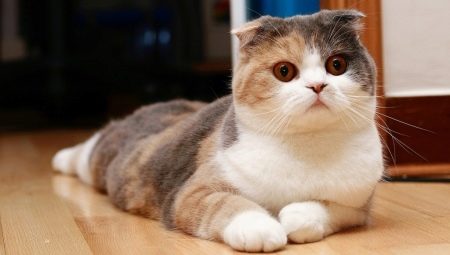
The Scottish cat is a very popular feline breed. Previously, one of the most common colors was gray (blue). However, over time, new color options have appeared.
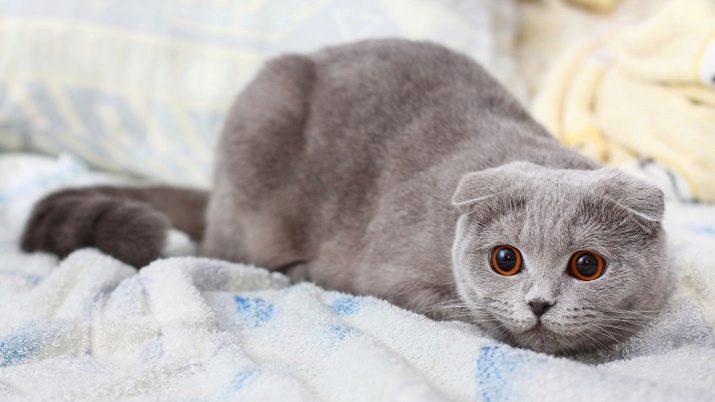
Peculiarities
The Scottish Fold (Scottish Fold) breed is considered to be the discoverer of the Scottish Fold, William Ross, who noticed kittens with an unusual color and a strange shape of ears from a familiar farmer. To obtain new, more varied types of color, the Scottish breed was initially crossed with others.
Especially often interspecific crosses occurred with British cats.... However, Scottish Folds now have all the genes they need to reproduce almost any color., so in our time, crossing a thoroughbred Scottish with other breeds is very, very undesirable.
Like other animals, the Scots have a specific set of genes responsible for coloration. Two shades are predominant: red and black.... Each of the colors, or rather, certain genes that are responsible for a particular color, are both dominant and recessive. The saturation of a certain shade of fur, which is formed by the diluent genome, depends on this.
A very unusual genetic combination in white cats. Two cases are possible: either complete lack of color, or suppression of other genes... In this regard, white Scottish cats are subdivided into albino and dominant white.
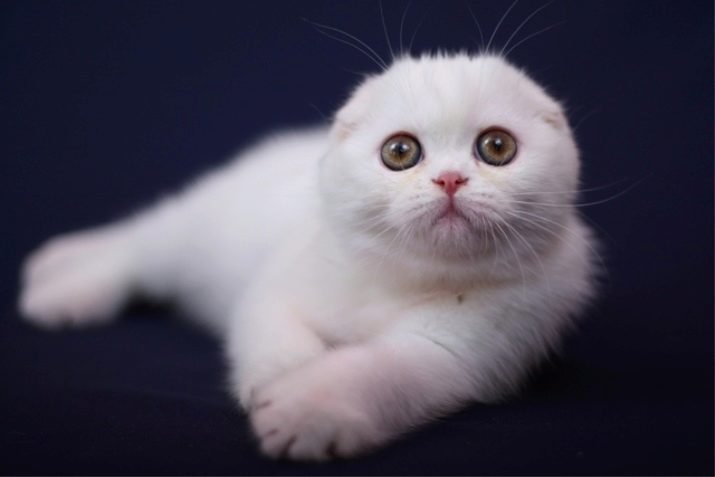
Remember that kittens' coloration will change as they get older. The Scottish kitten will reach its real, "adult", full color only at the age of two years.
Main colors
Solid (solid, solid) - the description of this type of shade can be understood based on its name. Cats of this color have a single, solid tone that does not imply the presence of other colors (complete absence of inclusions, spots, stripes and everything else). If other colors are still present, then it is necessary to carefully study the impregnation itself - it can speak of either a different color variant or indicate a congenital defect, which reduces the cost of an individual and estimates at shows.
Solid colors are divided into the following types.
- Blue (what ordinary people mistake for gray)... Not so long ago, the blue color was considered a classic for Scottish cats, but over time, other monophonic variants of shades appeared. There are various variations, some closer to gray, others closer to blues and blues. Kittens can have a variety of drawings on furthat should disappear a few months after birth. The eyes are amber, the nose and pads of the paws correspond to the color scheme of the coat.
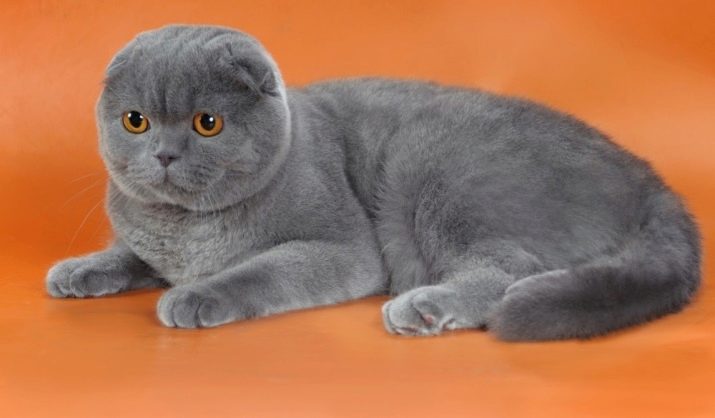
- Black (ebony). 1-2 light hairs are allowed, no more. The presence of large red or other stains of rusty tones indicates the impure blood of the animal. Eyes in amber colors. The nose and paw pads are black, matching the color of the fur, often merging with it.
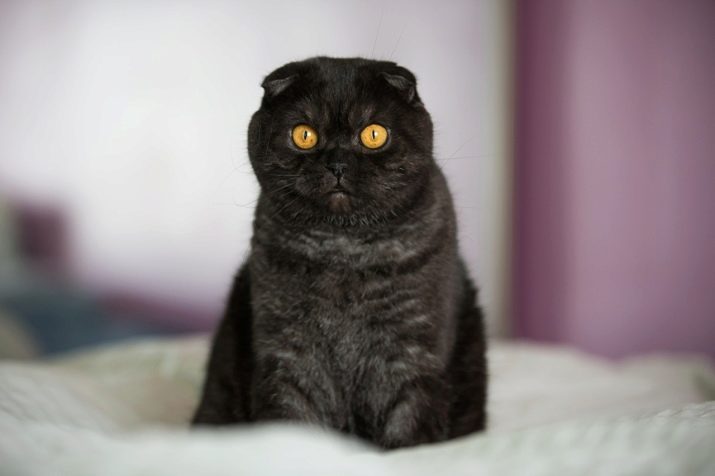
- White... These cats are odd-eyed, and can also have amber, blue, copper-colored eyes. In kittens or individuals under two years old, specks of extraneous shades are allowed, which, however, should completely disappear by two years. The white color should be crystal clear, without yellow tint. The nose and paw pads are pinkish.
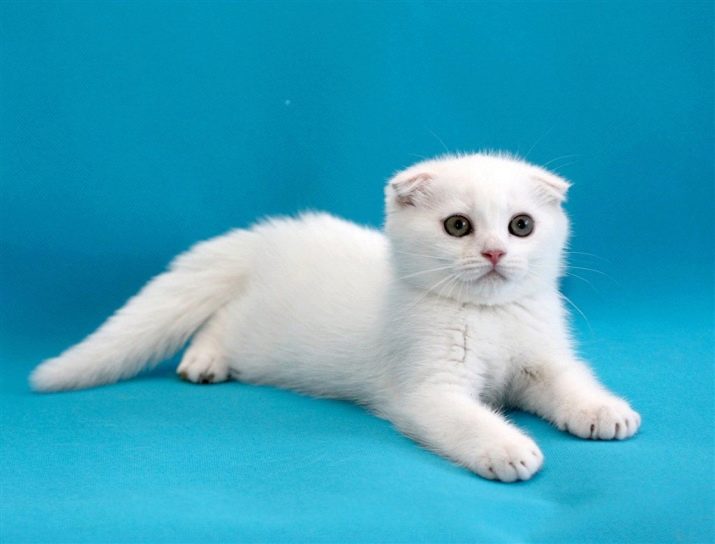
- Brown (chocolate). Rare enough color. The eyes are golden, yellow or copper colored.
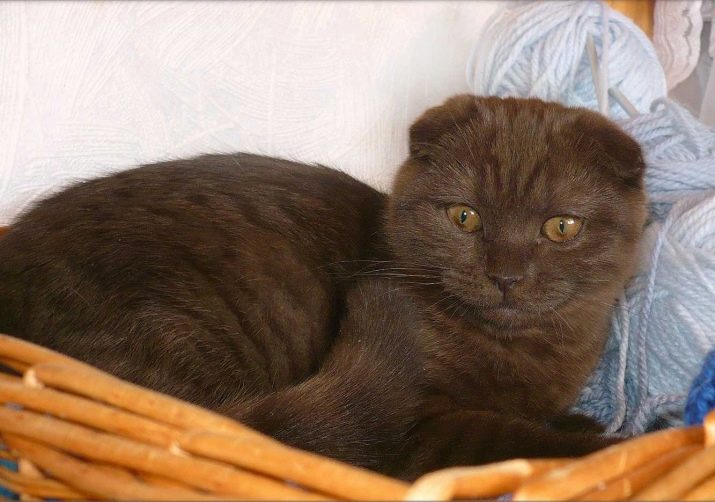
- Lilac (lavender or light coffee with milk). In fact, the last name for the shade is incorrect, since this subspecies is much lighter. The coat of a delicate gray shade gradually turns into a lavender tone, but retains its uniformity. This mixing gives the effect of a pinkish-blue color. Cats have amber, orange, copper colored eyes and a pale brownish nose.
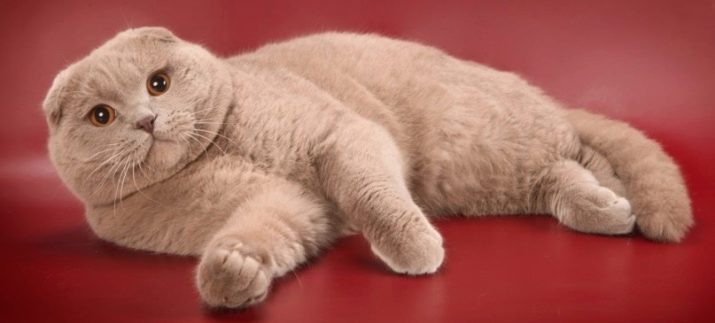
- Young deer (fawn or lavender)... Slightly similar to the previous look, but in reality it is clarified cinnamon. It is easy to distinguish between these two varieties - the nose and paw pads of kittens of this shade are painted in a beige-pinkish tone.
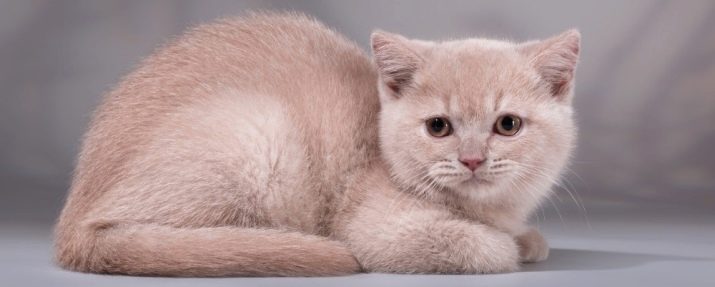
- Cinnamon... Lighter than chocolate, but darker than red. The shade is a bit like cinnamon. The paw pads and nose are brownish, pink or beige.

- Red (ginger). In kittens, as in mature individuals, the tail is colored unevenly. This defect does not disappear with age. If the cat has a pattern on the head or legs that has not disappeared by the age of two years, this is a deviation from generally recognized breed standards.
Eyes in amber colors. The nose and pads are the same color as the fur. Quite a rare color.
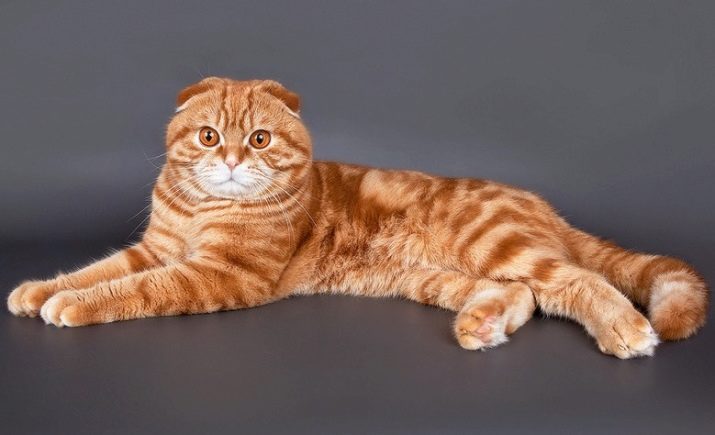
- Cream (peach). These cats are significantly lighter in color than red ones. Subtle, blurry patterns on the limbs and tail may be present, including in adult animals. However, leopard spots are not allowed.
Eyes in gold tones. Paw pads and nose are pinkish.
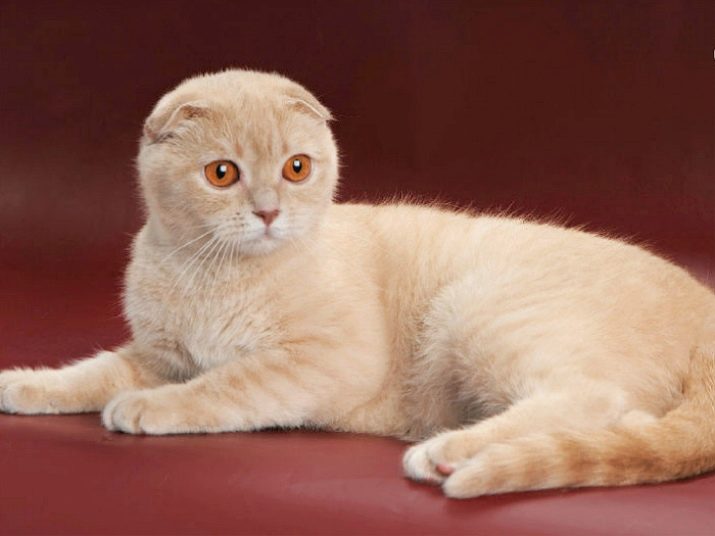
Bicolor - a kind of coat color, when the animal acts as a carrier of two basic tones. Snow white acts as a base and patterns of blue, cream, red or tabby are present.
The more symmetrical the pattern, the higher the value of such an individual.... The predominance of white in the color is mandatory. In purebred bicolors, having in their ancestors animals with the same color, the tummy, neck, chest, legs, chin and muzzle are white. On the face itself, you can find a speck, a little like an inverted V. Eyes are available in different tones, as well as golden or blue.
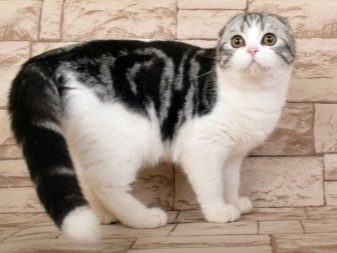
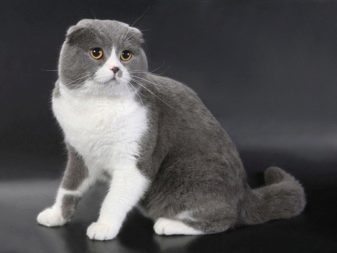
Bicolors are divided into the following types:
- particolor (calico) - an animal with white as the base color and patterns of tortoiseshell or spotted tabby;
- harlequin - a white individual with a black tail, ears and crown;
- van - almost the entire cat is of a snow-white shade, except for the tail. Sometimes the presence of several spots on the crown is allowed.
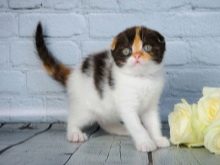
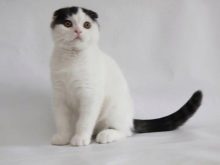
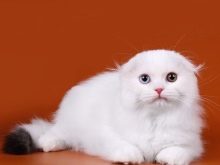
Point (or color point) - light coat, however, the limbs, face and ears are much darker. There are also various subtypes of this color.
- Pilak point. Combination of white coat with tan of unobtrusive lavender flowers.
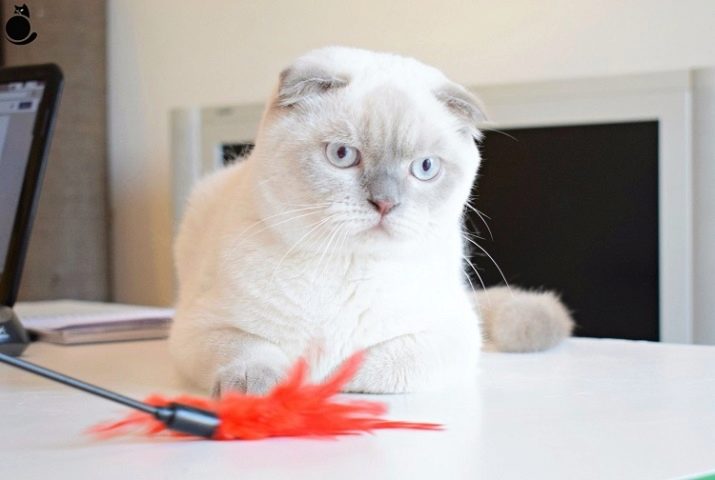
- Blue point. Light tones of coat, limbs have a pale blue tint.
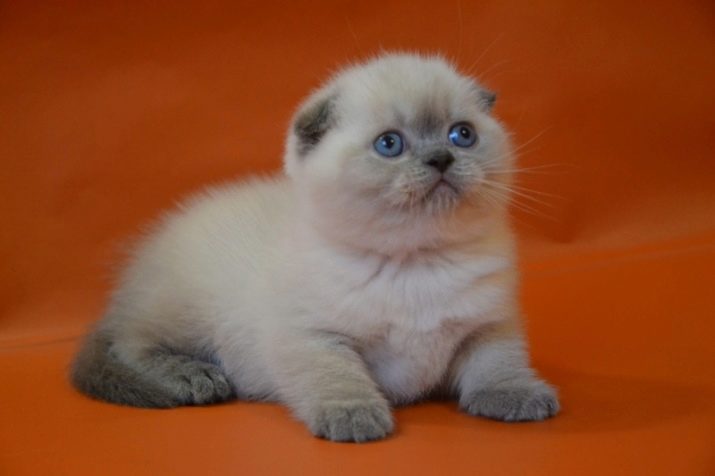
- Chockleet point. Snow-white fur interspersed with shades of dry cocoa or coffee.
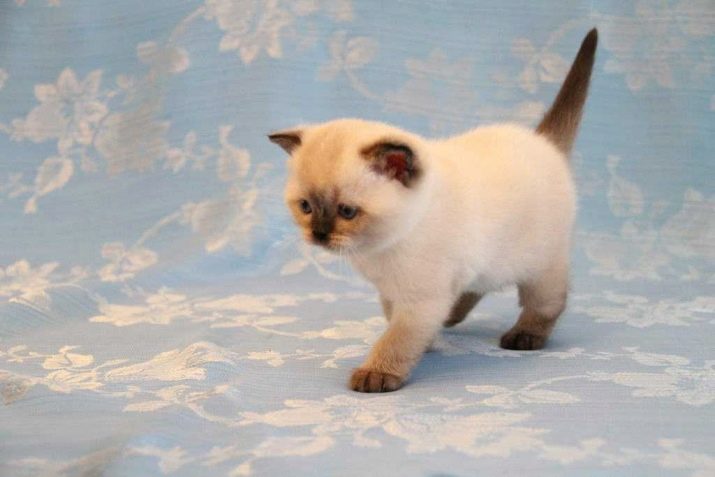
- Cream point. Basic cream, light coat with dark cream areas.
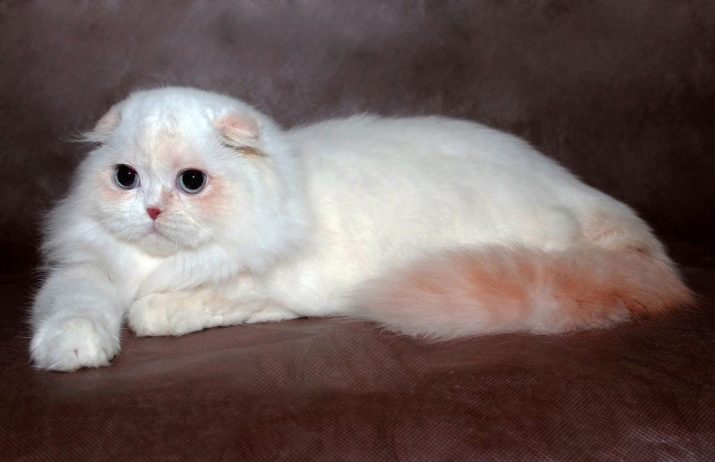
- Cake point. A very unusual, exotic color, implying the presence of the main obligatory marks on the tail, paws and face, which will alternate and make up various combinations with cream, red and other colors. The pattern should be distributed symmetrically throughout the coat. This color belongs exclusively to cats. In cats, this is a genetic disorder and indicates infertility.
In addition to the combination with red and cream, it can be a combination of chocolate and red, blue and cream, lilac and cream shades, and so on. All sorts of options are allowed. Eyes are yellow, nose and paw pads are either pinkish or black.
Such individuals are very similar to ordinary tricolor cats.
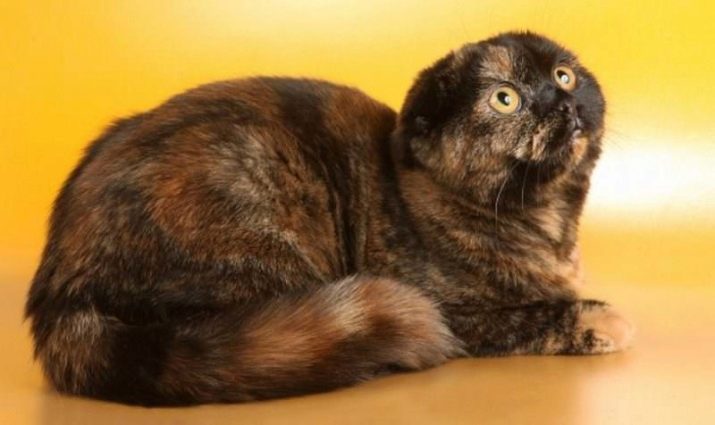
- Tabby point. The legs are striped, as are the face and tail.
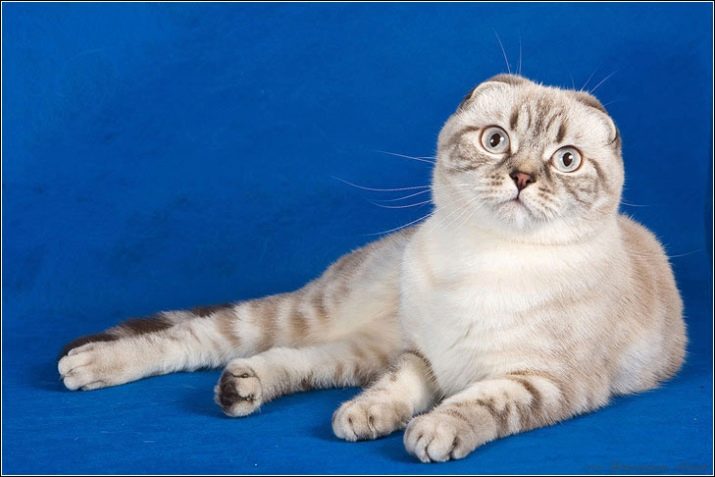
The last color of the coat resembles the color of Siamese cats and is due to the fact that in some places, where blood circulation is slightly worse, the hair begins to darken. The eyes of this breed are often blue or dark blue.
Smoky (fig or smoky) color. In cats with this color, the hairs are painted in different shades along the entire length. That is, the root area of the hair will be silver or white, and the other half, which is closer to the tip, will be of a different shade. This division of hair into color segments is called tipping. and is the result of the presence of the dominant silver gene. With this color option, the animal should not have a drawing or pattern.

To distinguish this color from a monochromatic one, it is enough to simply move the fur apart - with a solid color, the color of the roots will be indistinguishable from the tips, but with a smoky color, the white undercoat will be clearly visible.
It is unclear why, but currently, smoky cats are not allowed to participate in shows.
Shaded color slightly similar to smoky, but they differ in that when shaded, almost the entire hair will appear white or light, and only the uppermost, third segment of the hair remains colored. The tips of the fur that make up the top layer of the coat are of any Scots tone. The fur should not have a clear pattern, only the presence of the letter "M" on the front of the forehead and darkened rings on the legs are allowed.
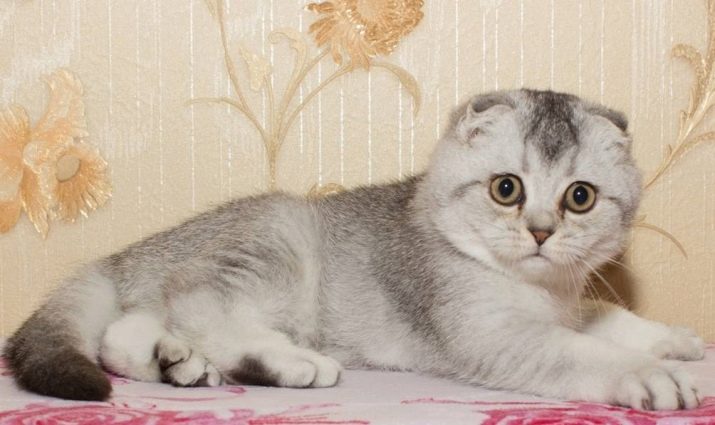
Tabby species
Tabby (or tabby) coloration suggests presence of a zonal pattern... It can be the letter "M" on the forehead, eyeliner on the nose and eyes, necklaces on the chest, rings around the tail and legs, highlighted spots on the back of the ear and frizzy patterns on the cheeks.. The norms dictate that all the stripes should have a small width, and in marble colors, a smooth, gradual transition into spots should be observed, which then add up to patterns on the belly and neck of the cat. The pattern is often very bright and stands out well against the base background.often contrasts with it. The tip of the nose and eyes appear to be slightly outlined.
Types of tabby color are divided according to the following principles.
According to the type of pattern
- Tiger (aka mackerel) - has vertical narrow distinct stripes on the sides.On the neck, the pattern resembles a wide collar, the tail is striped. The stripes on the sides rise higher and form a pattern on the back that is somewhat reminiscent of a saddle.
- Spotted (spotted) implies the presence of spots of various shapes and sizes, but the contours of such spots are usually very clearly delineated. Along the spine, spots can create a line that runs from the head to the base of the tail, which is also striped. There are also spots on the abdomen, but of a much smaller size.
- Marble (shaded, whiskas) - a pattern of spots and stripes scattered randomly throughout the coat. This variety can be of almost any color, but a distinct pattern will always provide a strong visible contrast to the base shade. This breed got its name because its color is a bit like patterns on well-polished marble.
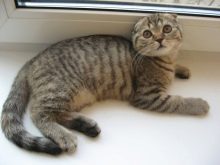
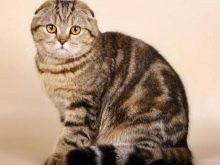
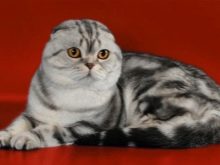
According to the color
- Silver. The main background is silver, the patterns are black.
- Silver blue. With a snow-white undercoat, sides, muzzle and tail.
- Red... Light red base with patterns in deep reds.
- Brown... A shade of old, darkened copper with a black pattern.
- Blue... The base is cream or blue, the pattern is rich.
- Cream... The base is very light, creamy, the pattern is much darker, it can be beige.
- Cameo tabby. The base is snow-white with stripes of red tones.
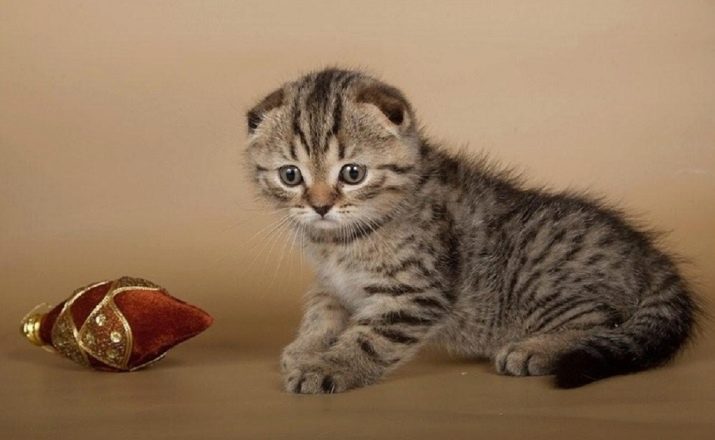
Varieties of chinchilla colors
Chinchilla coloring is based on the already familiar concept - tipping. These varieties are characterized by a color of about one-eighth of a hair, while most of it remains snow-white.
A kitten gets this color only if both of its parents belong to the same subspecies.
There are three types of chinchillas: silver, gold and unique, and therefore valuable - blue golden chinchilla... In silvery, on the tail there may be outlines - "shadows" of the stripes. The eyes are green, the nose is beige. The snow-white undercoat is a bit like breaking through gray hair. The tips of the ears, chin and belly are snow-white.

The golden chinchilla has a reddish tint on the back, tail and sides. In contrast to gold, in a blue golden chinchilla, the undercoat resembles melted milk in color (delicate, light caramel), and the coat is tinted blue with a shine. The eyes are deep green and resemble large, clear emeralds.
Rare shades
The ticked (also called Abyssinian) color is rare. If, in cases with tipping, the hair is colored in two different tones, then the ticked color implies the presence of three colors on one hair.
Ticking is a uniform zonal coloration with alternating dark and yellow rings on the surface of the hair and a dark top. Each hair has stripes of different shades, that is, each hair becomes unique.
Among the Scots, this color is considered rather rare and expensive.
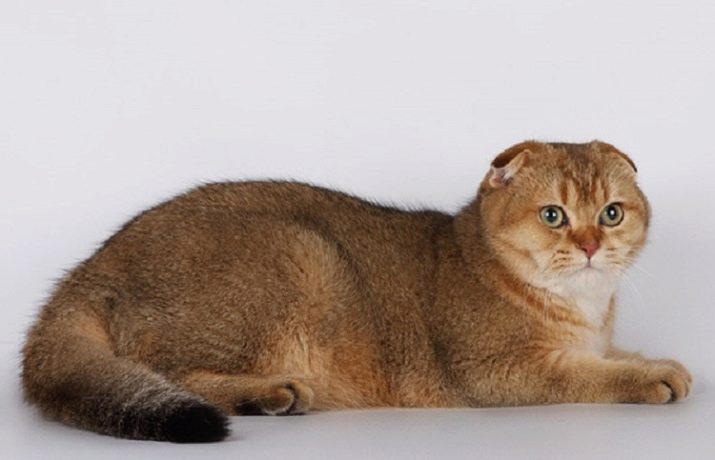
The following video will tell you about the rarest colors of Scottish cats.
































